This Cantonese chow mein, also known as Cantonese soy sauce chow mein, takes only 15 minutes to make, which makes for a great side dish or meal for both weekdays and weekends. Supplement this noodle dish with some sauted garlic bok choy, pan fried pork dumplings, or even some comfy egg drop soup to complete the meal!
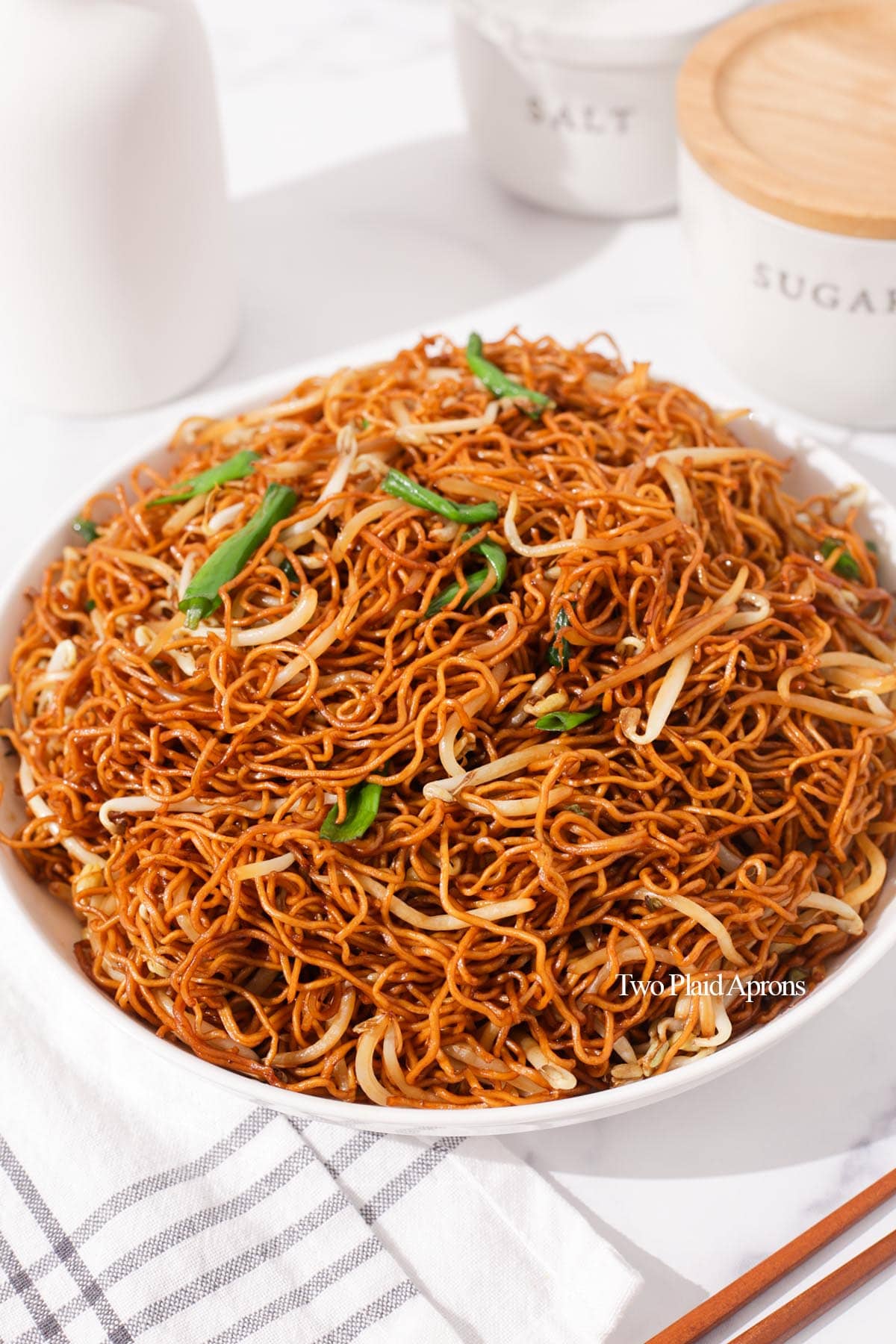
Cantonese chow mein (鼓油王炒面), also known as Cantonese soy sauce chow mein, roughly translates to "supreme soy sauce fried noodles". Its main flavorings comes from (light) soy sauce and dark soy sauce and the ingredients are kept to a few and usually without meat, so that the flavors stay simple and the soy sauce is the highlight.
The noodles have a slight nutty flavor from being pan fried and a beautiful chew that snaps when you bite it. Then, you have the mung beans that add a refreshing crunch to the whole dish.
You can often find Cantonese chow mein at dim sum restaurants or enjoyed as a morning fare, paired with congee, soy milk, and/or youtiao (aka Chinese fried dough sticks).
Jump to:
Ingredients
Please scroll down to the recipe card for the ingredient quantities!
- Chow mein noodles - You can find chow mein at most asian grocery story at the refrigerated aisles. Look for labels with "chow mein", "Cantonese chow mein", and "Chinese chow mein". The noodles are thin and yellow.
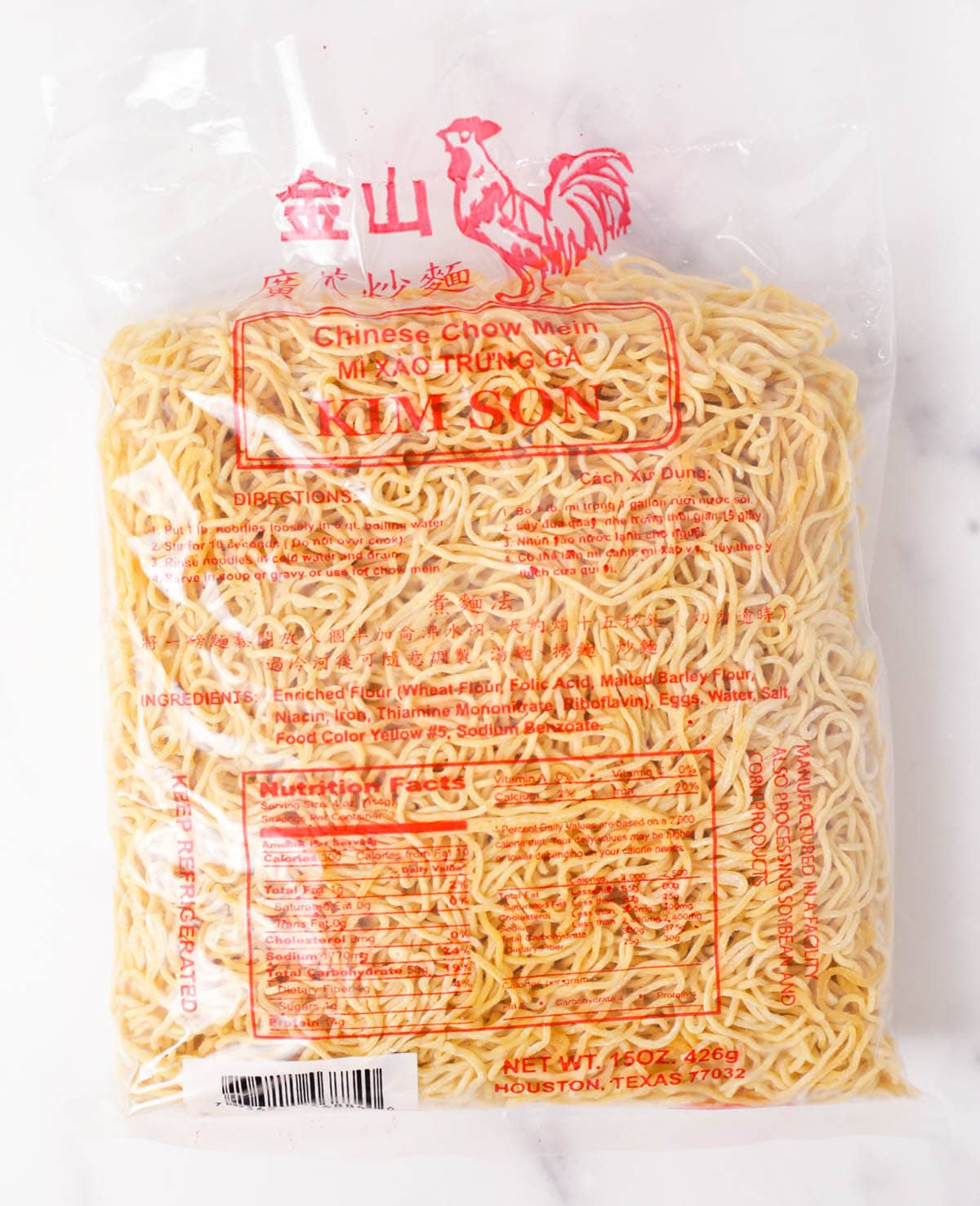
- Mung bean sprouts - This is a classic addition in Cantonese soy sauce chow mein. Mung bean sprouts adds a nice crunch and refreshing flavor to the noodle dish. Do note that there is also soy bean sprouts, which looks very similar to mung bean sprouts.
- Green onion - Green onion is also a classic vegetable addition to Cantonese chow mein. Not only does it add flavor, it also give the noodle dish some color pop.
- Yellow onion - Sometimes yellow onions are added as well. We did not use onions, but if you want to add onions to your chow mein, add it at the same time when you add the bean sprouts.
- Oil - Any neutral oil will do. The oil is for pan frying and stir frying the noodle dish.
- Soy sauce - One of the most important flavoring of this noodle dish. We recommend using light sodium soy sauce so that your chow mein doesn't become too salty. If you use regular soy sauce, you may have to reduce the amount used by a tablespoon. You can also use tamari if you prefer.
- Dark soy sauce - This is the other flavoring component for our Cantonese chow mein. Dark soy sauce adds a bit of sweetness, depth of flavor from the extra fermentation, and color to the noodle dish. You can usually find dark soy sauce at your local asian market, next to where the soy sauce are.
- Sugar - Just a little bit of sugar helps to round out the flavor and skip the oyster sauce. If you are using tamri, you could use a little less sugar.
- Toasted sesame oil - Sesame oil adds extra fragrance to the noodle dish and a nice nutty, toasty flavor. It's not absolutely necessary, but we highly recommend it.
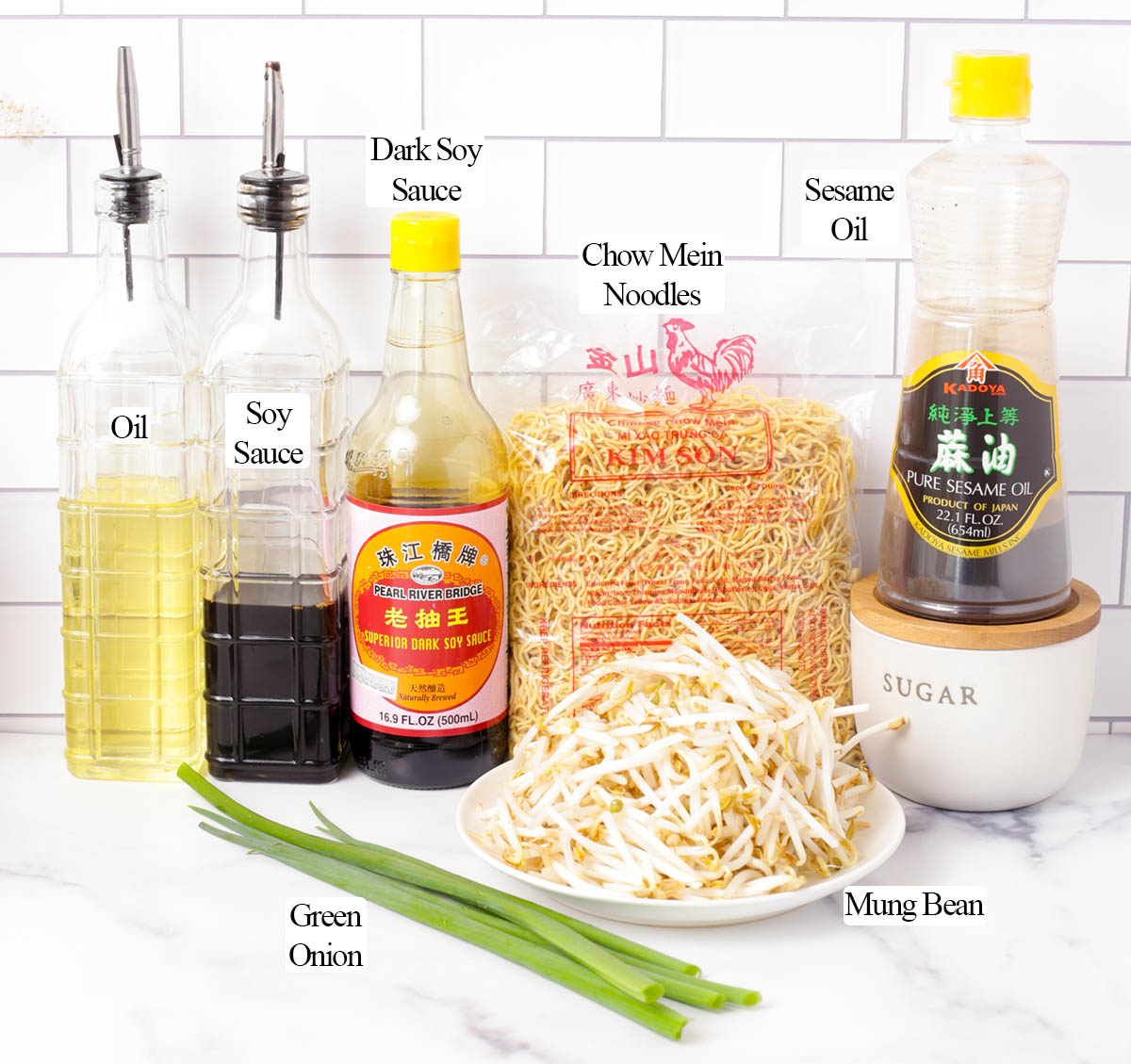
How to make Cantonese soy sauce chow mein
1. Bring a pot of water to a boil.
2. Meanwhile, combine the soy sauce, dark soy sauce, sugar, and sesame oil in a bowl. Mix until well combined and set aside until needed.
3. Once the water is boiling, add the chow mein noodles. Cook for about 10 seconds or according to the package instructions. The water doesn't have to maintain a boil after adding the noodles. Drain the noodles immediately and fluff with chopsticks or a fork until there is no more steam. Be careful! The noodles will be very HOT!
📝 Note: Fluffing the noodles and releasing the steam is to ensure that the noodles are completely dried. This ensures the noodles get pan fried well later in the recipe. You must do this immediately after draining the noodles for it to work.
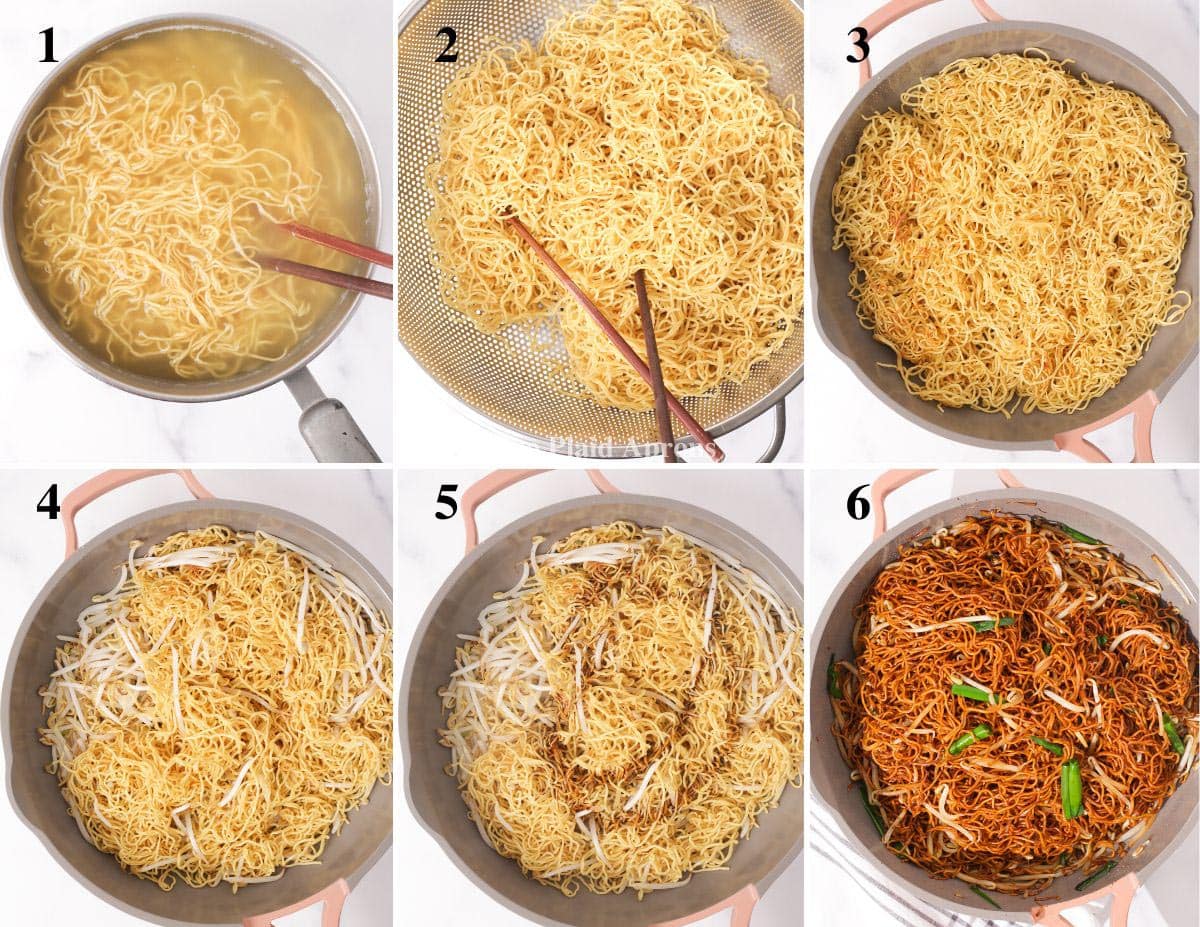
4. In a wok or large pan over medium heat, add enough to cover the bottom of the wok. When the oil is hot, add the prepared chow mein noodles. Spread out the noodles and pan fry until the noodles at the bottom are golden brown and crispy. Add 1 to 2 more tablespoons of oil, flip the noodles and repeat.
🌟 Pro tip: Occasionally press down on the noodles so that the noodles stay in contact with the pan. Do note that not all of the noodles have to be pan fried and golden. Just the bottom and top is fine. This is to add additional texture and further dry out the noodles.
5. Once the noodles have been pan fried, add the bean sprouts and green onions. Stir fry everything for about 30 seconds to a minute.
6. Give the prepared sauce a mix and pour it over the noodles. Immediately start tossing and and stir frying everything until the noodles are even in color and everything is well combined. If needed, lower the heat so the soy sauce doesn't burn.
7. Transfer to a serving plate and enjoy while hot!
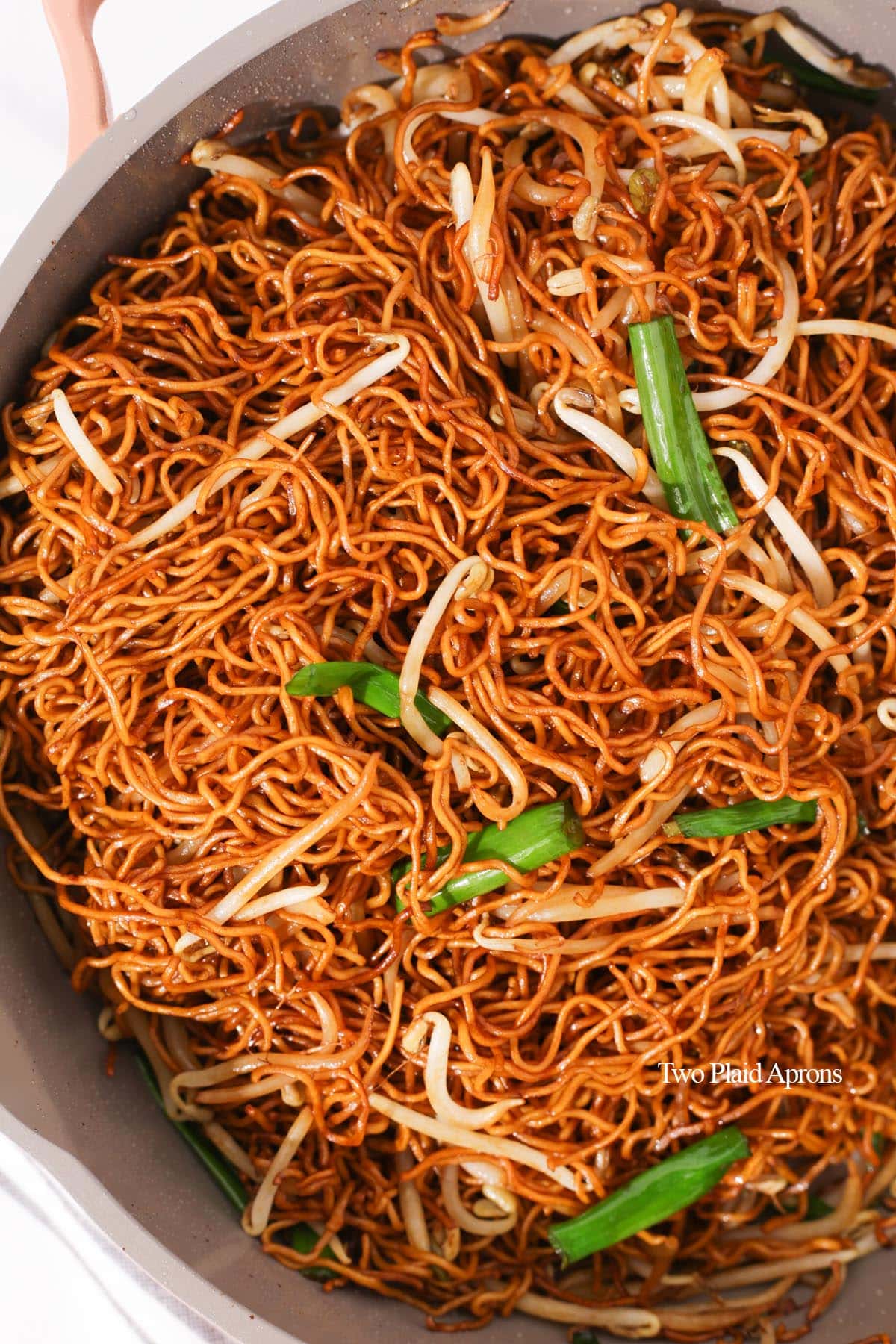
Recipe tips
- Fluff chow mein noodles immediately after draining. This ensures that the steam evaporates and the noodles become as dry as possible before pan frying. It will be HOT, so be careful!
- Use a nonstick pan or a well-seasoned wok to prevent the noodles from becoming stuck to the pan. Also, be patient. Sometimes the noodles have to be pan fried before they release themselves from the wok. So don't start moving the chow mein immediately if you see the noodles sticking initially.
- Adjust the heat to your comfort. Chow mein is an pan fry/ stir fry noodle dish. So, ideally the heat needs to be medium to medium high. But if you find it difficult to keep it at medium high, reduce the heat when stir frying so that your noodles do not burn.
- After adding the soy sauce mixture, start tossing and stir frying immediately so that the noodles get evenly coated with sauce.

Storage
Any leftover chow mein can be stored in an airtight container after it is completely cooled. It will be good for up to 4 days in the fridge.
Reheating
You can reheat the chow mein using the microwave or on the stovetop. To microwave, make sure to cover the noodles and heat until hot. If needed, add a small amount of water when heating.
For the stove top method, heat a pan over medium heat and add the leftover chow mein. Once the pan is hot, add a tablespoon or two of water and cover to let the noodles steam until hot. Uncover and stir fry until the water is completely evaporated. Enjoy while hot!
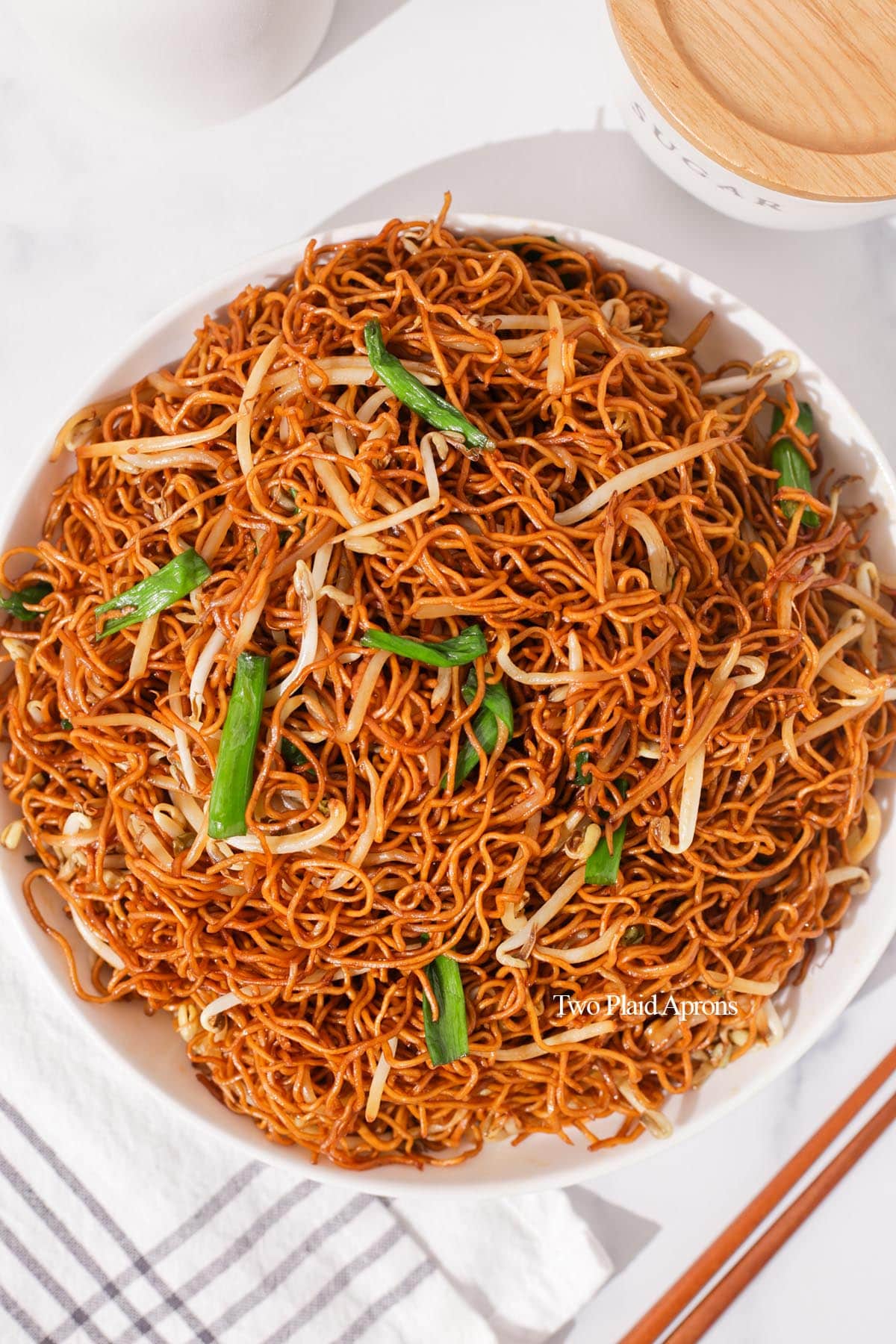
FAQ
The biggest difference between the two is in the noodles used for each dish. Both lo mein and chow mein uses Chinese egg noodles. However, lo mein uses thick egg noodles that's boiled first, while chow mein usually uses thin egg noodles that's pan fried, stir fried, and sometimes fried. Also, chow mein noodles usually contain less eggs in the noodles compared to lo mein noodles.
There are a couple different kinds of Cantonese chow mein. This cantonese chow mein is also known as soy sauce chow mein. The main ingredients are chow mein noodles, bean sprouts, green onions, soy sauce, and dark soy sauce.
For this Cantonese style chow mein, we recommend using thin, Chinese egg noodles. You can usually find them at your local asian market in the refrigerated aisles. Look for labels with "chow mein", "Cantonese chow mein", and "Chinese chow mein".
As the two soy sauces are the stars of this noodle dish, we highly recommend using both if possible. But if you are looking for gluten free substitutes, you could use a gluten free tamari. Do note that the color will be lighter and you may need to use less sugar, as tamari is a little sweeter.
If you’ve made this recipe or any recipes from our blog, please tag us on Instagram using #twoplaidaprons! You can also tag us in your Instagram stories using @two_plaid_aprons. We would love to see your creations! It absolutely makes our day! 🥰
📖 Recipe
Cantonese Chow Mein
Ingredients
- 15 ounces chow mein noodles
- 8 ounces mung bean sprouts rinsed and well drained
- 3 stalks green onions cut into 2 inch pieces
- 3 tablespoons oil or as needed (any neutral oil will do)
- 2 tablespoons soy sauce low sodium recommended
- 2 tablespoons dark soy sauce
- 2 teaspoons granulated sugar
- 1 teaspoon toasted sesame oil
Instructions
- Make the sauce:In a bowl, combine the soy sauce, dark soy sauce, sugar, and sesame oil. Mix until well combined and set aside until needed.
- Prepare the noodles:In a pot of boiling water, add the chow mein noodles. Cook for about 10 seconds or according to the package instructions. It's okay if the water isn't boiling after noodles are added. Drain the noodles immediately and fluff with chopsticks or a fork to release the steam. This ensures that the noodles are extra dry. Fluff until there's no more steam. *Be careful! The noodles will be very HOT!*
- Make the chow mein:In a wok or large pan over medium heat, add 1 to 2 tablespoons of oil or enough to cover the bottom of the wok. When the oil is hot, add the prepared chow mein noodles and pan fry until the noodles at the bottom are golden brown and crispy. Add 1 to 2 more tablespoons of oil, flip the noodles and repeat. Press down on the noodles if needed and pan fried in batches if necessary.*Not all of the noodles have to be pan fried. Just the bottom and top is fine.*
- Once the noodles have been pan fried, add the bean sprouts and green onions. Stir fry everything for 30 seconds to a minute.
- Give the prepared sauce a mix and pour it over the noodles. Immediately start tossing and stir frying everything until the noodles are even in color and everything is well combined. If needed, lower the heat so the soy sauce doesn't burn.
- Transfer to a serving plate and enjoy while hot!
Notes
- Chow mein noodles - Chow mein is a type of Chinese egg noodles, and there are a ton of different egg noodles. So when shopping for these noodles, look for labels such as "chow mein", "Chinese chow mein", or "Cantonese chow mein". They are the super thin egg noodles, and you can usually find them in the refrigerated aisles at Asian markets.
- Onion - Thinly sliced yellow onions are a popular addition in cantonese chow mein. If you like onions, you can add some sliced onions when adding the bean sprouts and green onions. If you prefer your onions more cooked, you can set the chow mein aside after pan frying. Then, stir fry the onions until translucent before adding the noodles and vegetables back into the wok.
- Pan frying the noodles - Not all of the noodles have to be pan fried. Just pan frying the noodles at the bottom and top is enough. This is to add texture and further dry out the chow mein. It also adds a bit of a nutty flavor to the dish. But if you pan fry the noodles too much, the chow mein can become too dry.




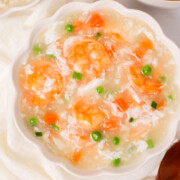
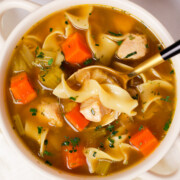
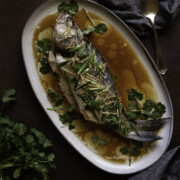


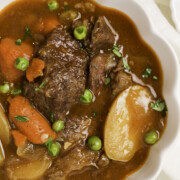

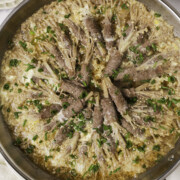
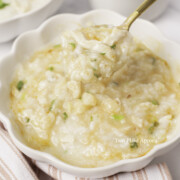
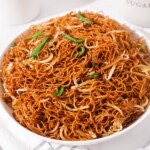



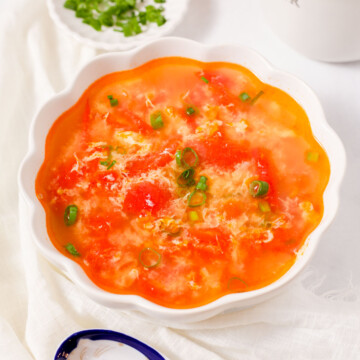
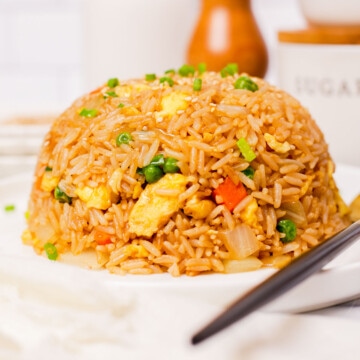
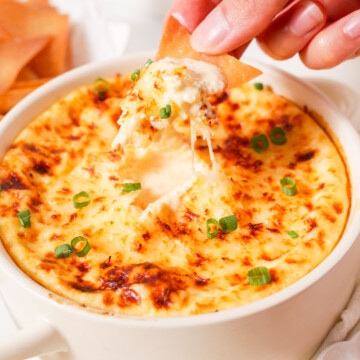
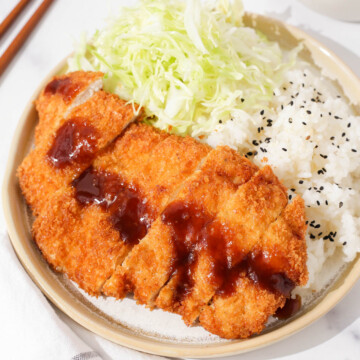
Comments
No Comments